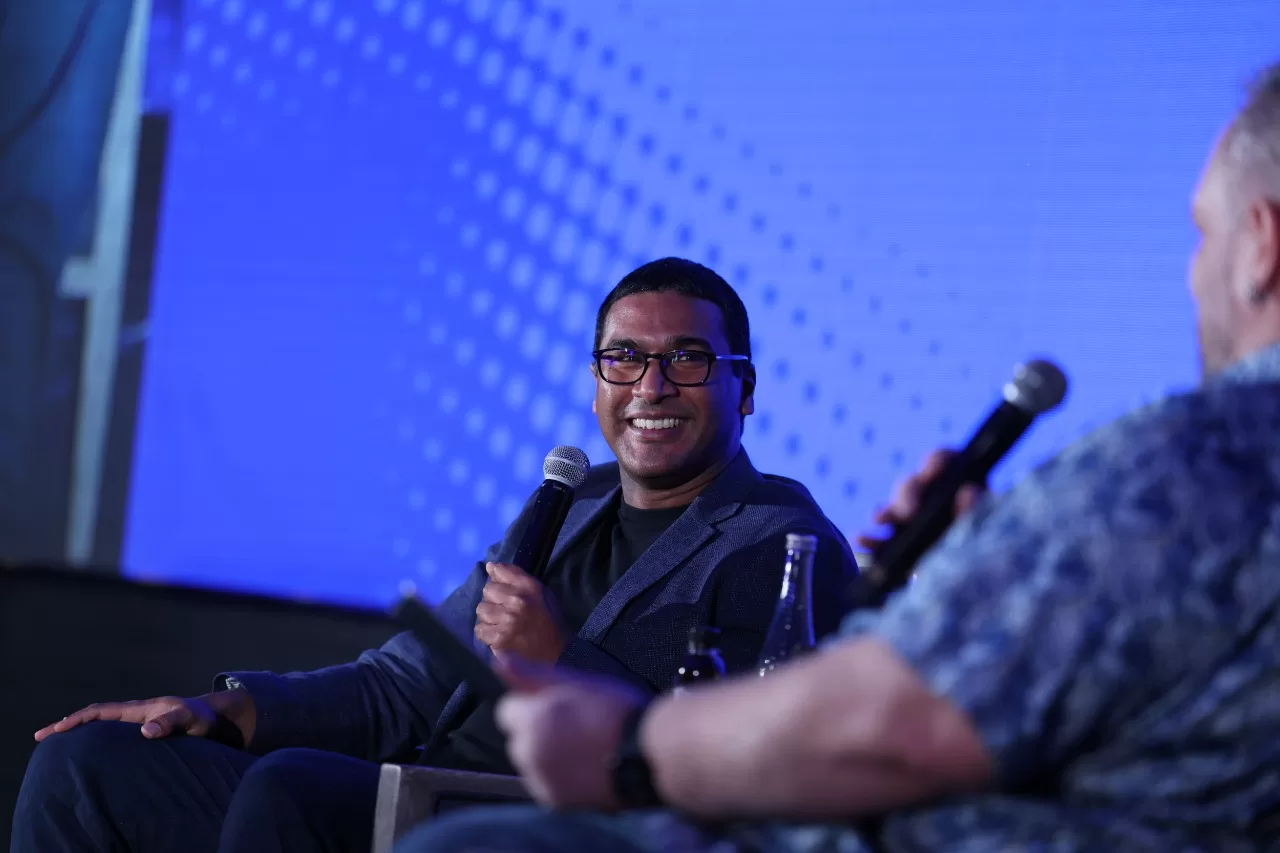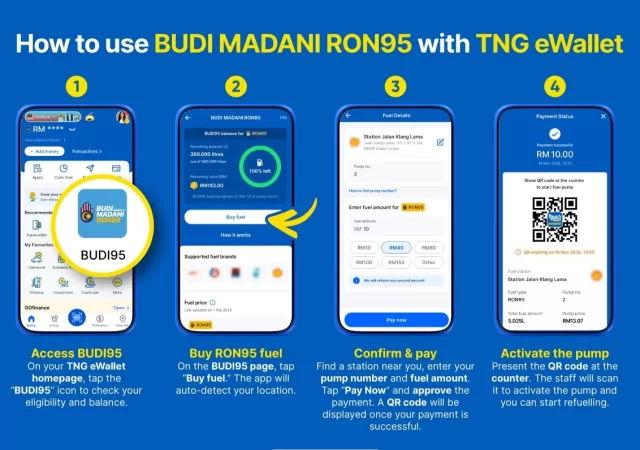Grab’s humble roots as a Malaysian-born start-up are often ignored as the company has moved its headquarters over to Singapore, a country that was, at a time, more receptive to disruptors and unicorns. However, Malaysia’s talent still plays a vital role in the organisation as the company continues to host some of its core talent in Malaysia like its technical team – one which the company is currently expanding.

That said, the company’s Chief Technology Officer, Suthen Thomas Paradatheth, continues to lead the expanding technical and programming teams. Suthen is a Malaysian, born and bred. He hails from Kuala Lumpur – Petaling Jaya more specifically – and has had most of his education locally in institutions like Sekolah Menengah Seaport (now known as Sekolah Menengah Sri Permata). Suthen earned his Bachelor’s Degree in Software Engineering with First Class Honours from Multimedia University in 2005. Programming seems to be innate with Suthen having worked as a freelancer since his high school days.
After university, a series of fortunate events and good networking found him working on Grab’s codebase. He’s been with the company since its early days in 2011; Back then, it was still MyTeksi. Since then, Suthen has earned his Masters in Public Policy from the Harvard Kennedy School and continues to be the man behind (most) of the code and features that make their way into the Grab app.
But – we’re not here to talk just about his achievements, we’re here to talk about the tech he’s worked on and some of the methods of his madness. It’s worth noting though, that even with his impressive resume and experience – particularly with Grab – Suthen remains extremely humble and approachable.
Passion Driven, Curiosity Fuelled
Heading Grab’s Technology and Programming is no small task. From its early days, the task of building the Grab Superapp has been monumental. It involved significant changes to the codebase, deciding which language to use and even creating new approaches. The task – which at one point was outsourced to programmers in India – is now handled by a team of about 2000 employees and headed by Suthen.

“Software engineering is, like, the closest thing to magic in the real world. Like, you put a certain set of words on a screen in a certain way and something happens…it’s the closest thing to a spell in reality.”
Suthen’s take on building a capable team is a rather unique one. In fact, his approach to working as the CTO is unique in itself. His approach is a very altruistic one mired in the belief that Grab as a platform is impacting lives significantly. This belief paired with an insatiable curiosity and passion for coding has led to his growth over the years and his ability to manage a large, growing team. This same passion and drive is what he looks for in his team members.
The ethos even rings true when the team deploys new features and services into the app. Key tenets like “How will users benefit from it?” and “Will it make a significant difference?” are big drivers to why we continue to willingly accept the big changes we see in the Grab app.
Empowering Independence and Diversity at Every Level
The technical team at Grab isn’t a small one and – like the super app – it’s not monolithic either. The 2,000-strong team is siloed into “Tech Families” a concept built on the similar “Tribes” or “Squads” model. Each of these families is focused on one of the more technical aspects of the app’s many services and functions. But more importantly, the teams are made of diverse talents that complement their functions and reduce dependence on other teams. These teams aren’t just made up of software engineers, they could have people skilled in data and analytics, designers and even communicators if the team’s functions need it. They’re cross-functional and allow teams to work independently and innovate freely.
The biggest component to the success of Grab’s approach isn’t just the diversity of talent and skills in each team – it’s trust. Suthen has an approach where he trusts the teams and their team leads. He communicates with the leads and trusts them to solve and address the concerns of their own team members. In his own words, “…my job is actually to create coherence, connectivity between the layers.”
Using the Right Technology to Go Places
The same approach to creating coherence also trickles down to tech adoption as well. Grab isn’t behind the curve when it comes to new technologies. In fact, they’ve recently announced a partnership with Open AI to adopt some of the many Generative AI technologies that come with Open AI’s ChatGPT. However, Grab isn’t just about adopting the newest, hottest thing on the market. The decision to adopt new technologies is driven by how the new technology addresses the needs of the organization. In fact, if there isn’t a solution on the market, the teams at Grab will create their own.
Not many people know this, but Grab has actually developed its own mapping system and doesn’t use third-party map providers like Google Maps. This change was driven by the fact that a lot of third-party mapping, didn’t serve the needs of Grab’s ride partners and users. This was particularly true in markets where GrabBike is more prevalent. To address the needs of ride partners and users, Grab actually looked to their ride partners to map lesser-known roads and pathways. Using AI and a simple action camera, Grab has created its own mapping platform that allows it to be more accurate and serve ride partners better.
However, being a technology company, the teams at Grab are continually innovating. In fact, the teams are continually trying to stay ahead of the curve by identifying and addressing new needs or existing ones that new technologies can address. Leadership, like Suthen, continually push for this innovation and also hire for it. More importantly, leadership should invest in its own people to drive innovation.
Creating Efficiency & Reliability from the Ground Up
Innovation isn’t about throwing something to the wall and seeing what sticks. It’s about creating answers to problems that arise or creating better ones to existing problems. Similarly, at Grab, the approach that Suthen and the tech teams adopt is one that creates efficiency. This efficiency doesn’t just mean it’s efficient in code – whatever they do has to create efficiency when it comes to the day-to-day of Grab’s operations and this includes the efficiency of ride partners.

“Running a good marketplace is also running an environmentally friendly sustainable marketplace.”
We’ve seen GrabShare come and go and return to the platform. This is due to Grab testing out more efficient and functional ways to implement it. Let’s be honest, having a single passenger in the ride can be a tad wasteful when it comes to resources, so with GrabShare, where available, the driver earns more while being more efficient with the petrol the cars utilise. With ESG goals playing an increasingly important role in companies, this approach literally builds these goals into the code.
Even when it comes to the adoption of AI and new technologies, Suthen and his team are looking at how it impacts day-to-day functions. One of the pain points they hope to resolve is the waiting time for riders when it comes to food deliveries. Minimising this would not only mean that delivery partners are more efficient with their time, it would also mean that they are able to earn more. This would also help drive more efficiency with the fuel that is being used.
Of course, when it comes to ride-hailing, Grab is looking into EVs and hybrids that allow them to be more environmentally friendly. In fact, they’ve already started offering GrabGreen in other markets.
Creating a Sustainable, Passionate Team Starts with the Top
The one thing that rang true in our sit down with Suthen is this: the culture and workspace environment start very much with the top. The right approach, empowering your teams, creating independence, and prioritising your innovations will drive your teams to increase productivity and even retain your customers.
Overall, key takeaways for disruptors and even CTOs looking to create a team that is innovation-driven is this:
- Trust is key when you build your team.
- Create teams that are self-sufficient and reduce dependencies to keep them agile.
- Innovate efficiently and keep your company’s values as a driving force.






